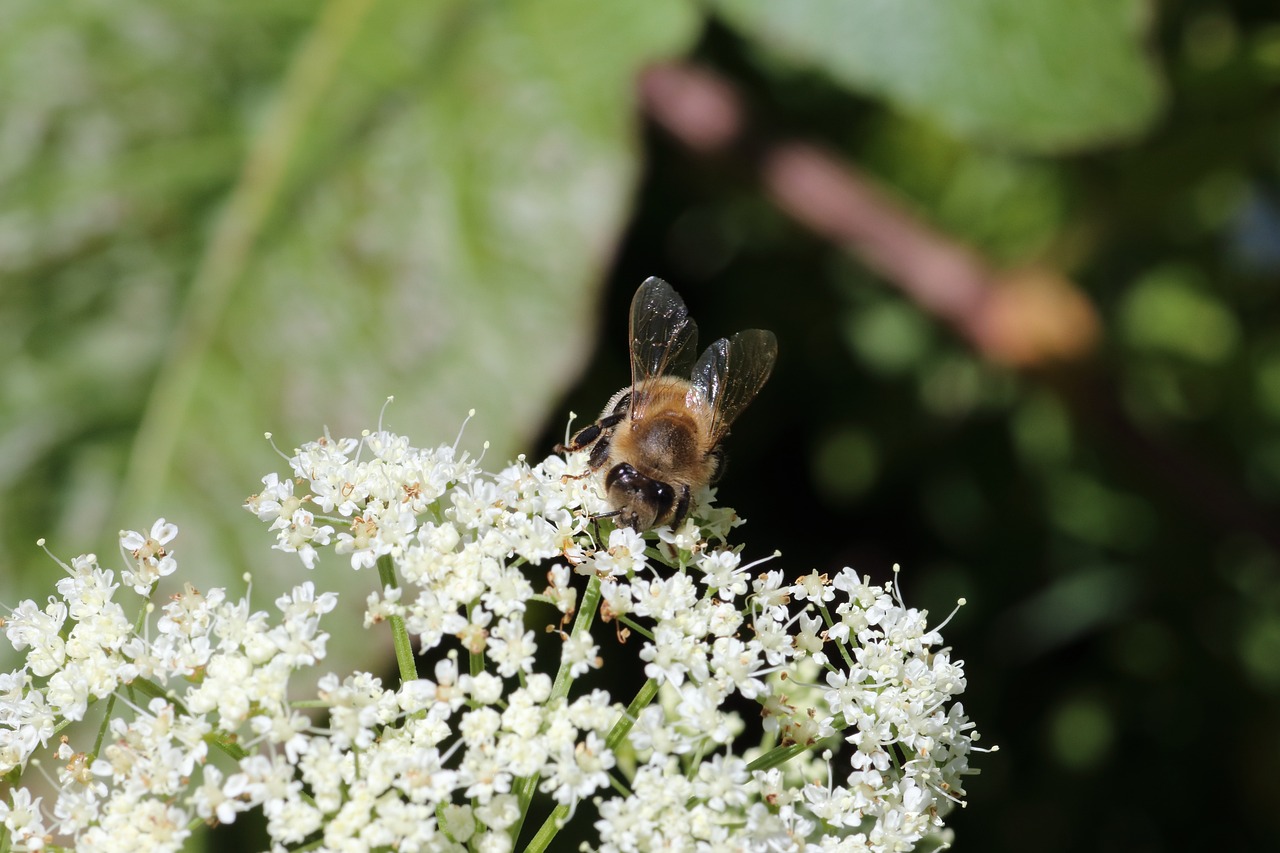Effective methods for controlling goutweed include physical removal, chemical herbicides, and ongoing management practices. Combining these strategies can significantly reduce its spread and impact on gardens and landscapes.
Understanding Goutweed

Goutweed, also known as Aegopodium podagraria, is an invasive perennial plant that can quickly take over gardens and natural areas. This plant is characterized by its lush green foliage and small white flowers, making it appear attractive at first glance. However, its aggressive growth habit allows it to outcompete native plants, leading to a loss of biodiversity in affected areas.
Originally introduced as a ground cover, goutweed rapidly became a nuisance due to its extensive rhizome system. These underground stems allow the plant to spread both vegetatively and through seed production. Once established, goutweed can be incredibly difficult to eradicate, often requiring a combination of methods for effective management.
Identifying Goutweed
Recognizing goutweed early is crucial for effective control. The plant typically grows about 12 to 24 inches tall and has distinctive trifoliate leaves. It often forms dense mats that can smother other vegetation. Here are some key identifying features:
- Leaves: Triangular with serrated edges, bright green in color.
- Flowers: Small, white clusters that bloom in late spring to early summer.
- Growth Habit: Spreads rapidly through rhizomes and seeds.
Understanding the life cycle of goutweed is also important. It typically emerges in early spring and can grow rapidly throughout the warm months. By late summer, the plant produces seeds that can disperse over considerable distances, further complicating control efforts.
Methods for Controlling Goutweed
There are several effective methods for managing goutweed populations. The following strategies can be employed individually or in combination for best results:
Physical Removal
One of the most straightforward methods of controlling goutweed is physical removal. This involves digging up the entire plant, including the rhizomes. It is essential to ensure that no fragments are left behind, as even small pieces can regenerate into new plants. Here are steps for effective physical removal:
- Use a spade or garden fork to loosen the soil around the plant.
- Carefully lift the entire plant out of the ground.
- Dispose of removed plants properly to prevent regrowth.
Chemical Control
Chemical herbicides can be effective in managing goutweed, especially in large infestations. Glyphosate-based products are commonly used, but it is important to follow label instructions carefully to minimize harm to surrounding plants and the environment. Timing is critical when applying herbicides:
- Apply during the active growing season for maximum efficacy.
- Target young foliage for optimal absorption.
- Avoid application before rainstorms to prevent runoff.
Ongoing Management
Once goutweed is controlled, ongoing management is crucial to prevent re-infestation. Regular monitoring and maintenance can help keep this invasive plant at bay. Consider implementing the following practices:
- Mulching: Apply a thick layer of mulch in areas where goutweed was previously present.
- Regular Mowing: Mow regularly to prevent flowering and seed production.
- Replanting: Introduce native species to compete with any remaining goutweed.
Combining these methods will create a comprehensive strategy to effectively manage goutweed infestations. Each approach has its advantages and challenges, but with persistence and care, it is possible to restore balance to affected ecosystems.
Advanced Strategies for Goutweed Management
While physical removal and chemical controls are effective, advanced strategies can enhance the management of goutweed. These methods focus on ecological balance and long-term sustainability. By integrating biological control and environmental modifications, you can improve your chances of successfully managing this invasive species.
Biological Control Options
Biological control involves using natural predators or competitors to manage invasive species like goutweed. Although specific biological control agents for goutweed are still under study, there are several approaches to consider:
- Encouraging Natural Predators: Birds and insects that feed on goutweed can help control its spread. Creating a habitat that attracts these natural predators can aid in managing goutweed populations.
- Companion Planting: Introducing plants that compete effectively with goutweed can suppress its growth. Consider planting robust species that can outcompete goutweed for sunlight, nutrients, and water.
- Utilizing Mycorrhizal Fungi: Some studies indicate that mycorrhizal fungi can inhibit the growth of goutweed by affecting its root system. Encouraging these beneficial fungi in the soil may provide additional control.
Soil Management Techniques
Soil management plays a vital role in controlling goutweed populations. Healthy soil can support desirable plants while limiting invasive species. Here are some techniques to consider:
- Soil Testing: Regularly test your soil to understand its nutrient composition and pH. Adjusting soil conditions can create a less favorable environment for goutweed.
- Improving Drainage: Goutweed thrives in moist conditions. Improving drainage in your garden can help reduce its spread. Consider amending your soil with organic matter to enhance drainage properties.
- Aeration: Aerating the soil can promote healthier root systems for desired plants, allowing them to compete better with goutweed.
Timing and Seasonal Considerations
The timing of your management efforts is crucial in controlling goutweed effectively. Understanding its growth patterns can help you plan your actions accordingly:
- Spring Management: Early spring is the best time to target young goutweed shoots before they establish strong root systems. This is an ideal time for physical removal and herbicide application.
- Summer Monitoring: During the summer months, keep an eye on areas previously treated. Regular monitoring allows for prompt action if new growth appears.
- Fall Preparation: In fall, consider mulching or planting cover crops to suppress any remaining goutweed and prepare the soil for winter.
Community Engagement in Goutweed Management
Involving the community in managing goutweed can amplify efforts and foster environmental stewardship. Here are ways to engage your community:
Organizing Community Clean-Up Events
Hosting events focused on removing goutweed can bring together community members while raising awareness about invasive species. Here’s how to organize an effective event:
- Plan Ahead: Choose a date and location that is accessible to participants.
- Provide Resources: Supply tools such as shovels, gloves, and bags for plant disposal.
- Educate Participants: Offer information on identifying goutweed and the importance of controlling invasive plants.
Creating Educational Materials
Distributing educational materials can inform residents about the impact of goutweed and how to manage it effectively. Consider the following approaches:
- Brochures: Design brochures that highlight identification, management techniques, and the importance of biodiversity.
- Workshops: Host workshops or webinars where experts can share knowledge about invasive plant management.
- Socia Media Campaigns: Utilize social media platforms to raise awareness and share success stories regarding goutweed management efforts.
Engaging the community not only enhances management efforts but also builds a sense of responsibility towards local ecosystems. Through collaboration and education, communities can work together to manage invasive species like goutweed effectively.

Preventing Goutweed Reinfestation
After successfully controlling goutweed, it is essential to implement strategies to prevent its reinfestation. This process requires ongoing vigilance and proactive measures to ensure that efforts are not in vain. Here are some effective strategies for preventing the return of goutweed.
Monitoring and Maintenance
Regular monitoring of previously infested areas is crucial. Early detection of any new growth can help in managing goutweed before it becomes a larger problem. Here are ways to incorporate monitoring into your routine:
- Frequent Inspections: Schedule monthly checks of areas where goutweed was previously present. Look for any signs of regrowth.
- Document Changes: Keep a record of your observations, noting the date and extent of any new growth. This information can help track the effectiveness of your management strategies.
- Engage Volunteers: Involve community members in monitoring efforts. Training volunteers can spread the responsibility and increase the level of vigilance.
Using Ground Covers
Planting competitive ground covers can be an effective way to suppress goutweed and prevent its return. Choosing the right plants is vital for success. Consider the following:
- Select Native Species: Choose native plants that thrive in your area. They will be better adapted to local conditions and more competitive against goutweed.
- Diverse Planting: A mix of different species can create a robust ecosystem that is less susceptible to invasion by goutweed.
- Dense Planting: Plant ground covers closely together to shade the soil and reduce the likelihood of goutweed establishing.
Restoration and Replanting Strategies

Once goutweed has been effectively controlled or removed, restoring the area with desirable plants is important. This will not only enhance biodiversity but also create a resilient ecosystem. Here are some effective restoration strategies:
Choosing the Right Plants
Selecting appropriate plants for restoration is key. Consider the following factors:
- Ecological Compatibility: Choose plants that are well-suited to the local climate, soil type, and moisture levels.
- Growth Habit: Opt for species that have a growth habit that will outcompete goutweed, such as those with extensive root systems or fast growth rates.
- Diversity: Incorporate a range of species to promote ecological balance and resilience against future invasions.
Creating a Planting Plan
A well-thought-out planting plan can help ensure successful restoration. Follow these guidelines:
- Site Preparation: Clear any remaining goutweed and debris from the area before planting.
- Soil Amendment: Test and amend the soil as necessary to provide optimal growing conditions for new plants.
- Planting Schedule: Develop a timeline for planting based on local climate conditions and the specific requirements of chosen plant species.
Legal and Regulatory Considerations
Understanding local regulations regarding invasive species management is crucial for effective goutweed control. Different regions may have specific guidelines or restrictions on herbicide use or disposal of invasive plants. Here are steps to ensure compliance:
- Research Local Laws: Familiarize yourself with local invasive species regulations and best practices for managing them.
- Obtain Necessary Permits: If using chemical treatments, ensure you have any required permits or licenses.
- Report Infestations: Many regions have programs for reporting invasive species sightings. Participating in these programs can assist in broader community management efforts.
By adhering to legal guidelines, you can contribute to a coordinated effort in managing invasive species like goutweed effectively while promoting environmental health in your community.
Building Partnerships for Greater Impact
Forming partnerships with local organizations, governmental bodies, and educational institutions can significantly enhance goutweed management efforts. Collaborative initiatives can lead to more comprehensive strategies and resource sharing. Consider these approaches:
- Collaborate with Environmental Groups: Partnering with local environmental organizations can provide access to expertise, labor, and funding for management projects.
- Engage Schools and Universities: Involving educational institutions can foster research opportunities and student engagement in conservation efforts.
- Create Community Networks: Establish networks of residents interested in invasive species management to share experiences, resources, and strategies.
By working together, communities can more effectively combat invasive species like goutweed and restore ecological balance to their landscapes.
Integrating Technology in Goutweed Management

In the modern era, technology can play a significant role in managing invasive species like goutweed. Utilizing various tools and platforms enhances the efficiency and effectiveness of control strategies. Here are some ways technology can be integrated into goutweed management:
Geographical Information Systems (GIS)
GIS technology can be instrumental in mapping infestations and planning management efforts. By utilizing GIS, land managers can:
- Track Infestations: Map the locations of goutweed populations to monitor spread over time.
- Analyze Distribution Patterns: Identify areas most at risk for invasion based on ecological data.
- Plan Resource Allocation: Use data to prioritize where to focus management resources and efforts.
Mobile Applications
Various mobile applications are designed to assist with identifying and managing invasive species. These tools can help users:
- Identify Goutweed: Use identification apps that provide information on invasive plant species, including photos and descriptions.
- Report Sightings: Submit real-time reports of goutweed sightings to local authorities or environmental groups.
- Access Management Strategies: Find resources on best practices for controlling goutweed through mobile platforms.
Online Community Platforms
Engaging in online communities focused on environmental conservation can provide additional support. Benefits include:
- Sharing Experiences: Connect with others who have faced similar challenges in managing goutweed.
- Resource Exchange: Share tools, techniques, and resources that have proven effective in controlling invasive species.
- Networking Opportunities: Build relationships with experts who can provide guidance and advice.
Encouraging Sustainable Practices
Sustainable land management practices are essential for long-term success in controlling invasive species like goutweed. Implementing these practices can help create ecosystems that are resilient to invasions. Consider the following sustainable approaches:
- Organic Gardening Techniques: Use organic methods for pest and weed control to minimize chemical inputs that could harm beneficial organisms.
- Soil Health Improvement: Focus on enhancing soil health through composting and organic amendments to promote native plant growth.
- Water Conservation Measures: Implement rain gardens and other water conservation practices to create a more stable environment for native plants.
Final Thoughts
Controlling goutweed requires a multifaceted approach that combines immediate action with long-term strategies. By employing methods such as physical removal, chemical controls, biological methods, and community engagement, individuals and organizations can effectively manage this invasive species. The integration of technology, collaboration with local groups, and the promotion of sustainable practices further enhance the chances of success.
The importance of education and awareness cannot be overstated. Providing information about the impact of goutweed on local ecosystems fosters a sense of responsibility within communities. Through continuous monitoring, collaboration, and dedication to restoration efforts, it is possible to reclaim spaces affected by goutweed and protect native biodiversity.
Ultimately, the battle against goutweed is not just about eradication; it is about fostering healthier ecosystems where native plants can thrive. With collective effort and the right strategies in place, we can create landscapes that are resilient to invasives and vibrant with diversity.
